2020 Employee Recognition Trends
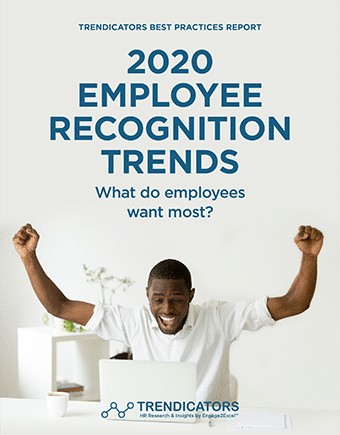
INTRODUCTION
What do employees want most when it comes to recognizing their day-to-day contributions in the workplace? How do the recognition programs of employers align with these preferences? These are among the topics explored in this review of 2020 Employee Recognition Trends. While recognition and incentive program owners are optimistic, with many projecting budget increases for the coming year, long-standing disparities remain between employee preferences and workplace realities.
Although an overwhelming majority of employees say they believe recognition for performance increases their engagement at work, the existence of programs designed to recognize and reward performance-based behaviors and actions remains relatively rare. And while the vast majority of organizations offer length of service recognition programs, a large percentage of employees have not been recognized at work in the past six months or more.
What are recognition and rewards program owners doing to enhance their initiatives? According to the Incentive Research Foundation (IRF), more program owners will rely on participation rates next year to report on and analyze program effectiveness. Drivers for change include keeping up with what competitors are doing, improving communications and participant engagement, and facilitating more personalized recognition experiences. Greater enterprise-wide focus on the importance of employee experiences is also driving new forms of experiential recognition. Our report concludes with examples of events and activities designed to promote team-based communication, collaboration, and decision-making skills.
Download
 hbspt.cta.load(123973, '31357b22-23f3-4000-b0e5-4a956fc380f0', {});
hbspt.cta.load(123973, '31357b22-23f3-4000-b0e5-4a956fc380f0', {});
Recognize Employees Early and Often
It is widely understood that employee recognition plays a vital role in improving engagement, performance and retention. However, while employees believe recognition is important, there continues to be misalignment between employee preferences and workplace realities. Experts agree that raising manager awareness and recognizing employees in real-time are essential for recognition program success.
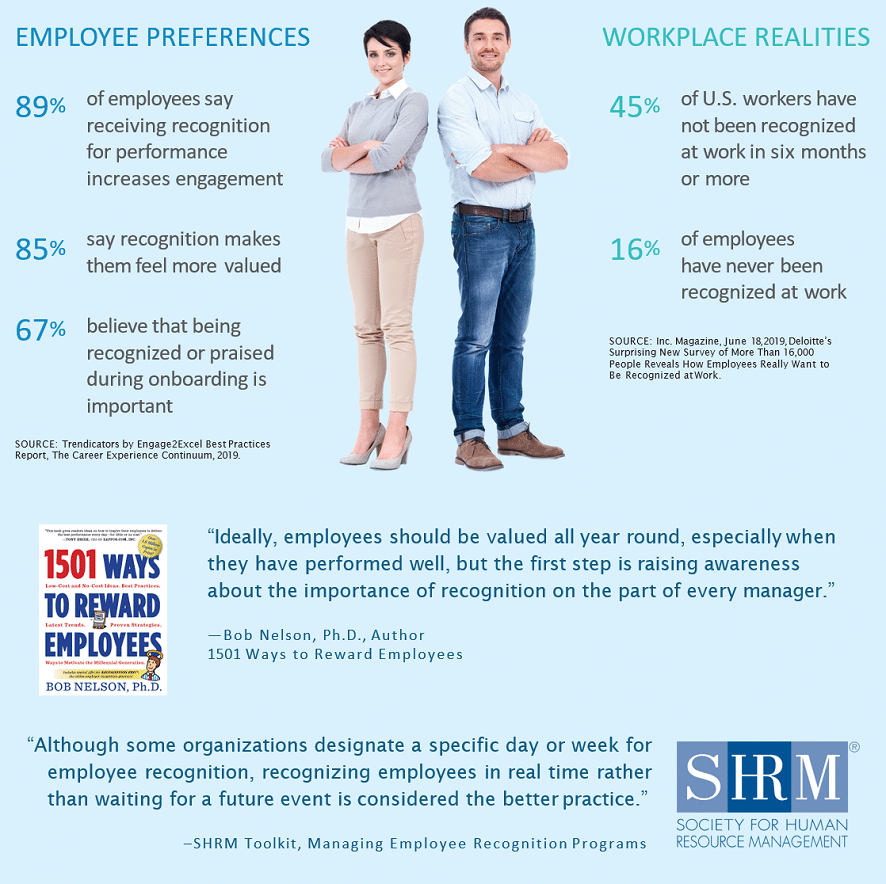
Download
 hbspt.cta.load(123973, '31357b22-23f3-4000-b0e5-4a956fc380f0', {});
hbspt.cta.load(123973, '31357b22-23f3-4000-b0e5-4a956fc380f0', {});
Alignment and Breadth of Recognition
Length of service programs remain the most popular form of employee recognition. Although these programs are popular with employees of all age groups, a disparity exists between what employees want to be recognized for and the prevalence of performance recognition programs. One positive trend that may influence this is the fact that “Employee Experience Manager” is one of the fastest-growing job categories in HR.
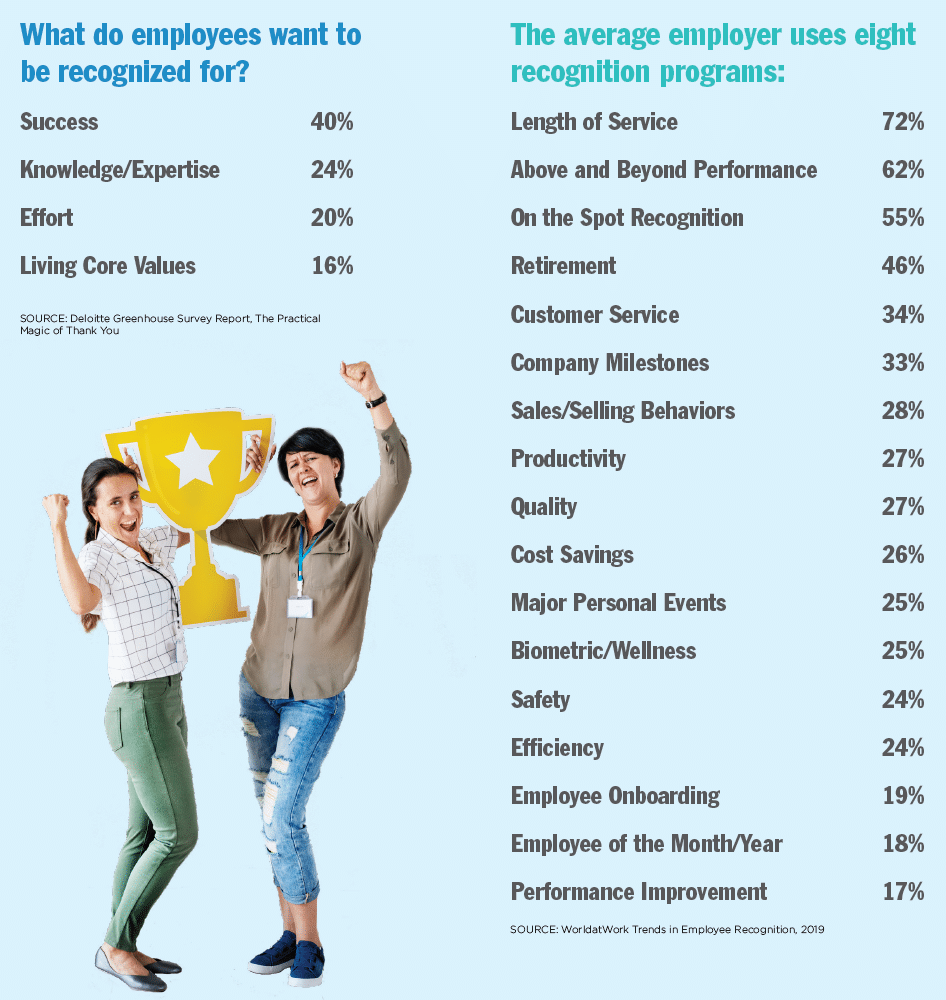
Download
 hbspt.cta.load(123973, '31357b22-23f3-4000-b0e5-4a956fc380f0', {});
hbspt.cta.load(123973, '31357b22-23f3-4000-b0e5-4a956fc380f0', {});
Recognition Preferences and Presentation Modalities
Every corporate culture is unique. But, one universal truth applies to all forms of employee recognition. It is critical to understand the employees’ preferences regarding who recognizes them and how public that the recognition is. Industry-wide surveys reflect broad trends, but there is no substitute for gaining first-hand insight on the preferences of employees at your company.

Download
 hbspt.cta.load(123973, '31357b22-23f3-4000-b0e5-4a956fc380f0', {});
hbspt.cta.load(123973, '31357b22-23f3-4000-b0e5-4a956fc380f0', {});
Trends in Rewards, Budgets and Non-Cash Incentives
A positive economic outlook, continued high employment, and organizational focus on employee retention are among the trends influencing increased spending on recognition and rewards in 2020. According to the IRF, brand name merchandise and electronics remain the most popular categories, and budgets are increasing in most areas.
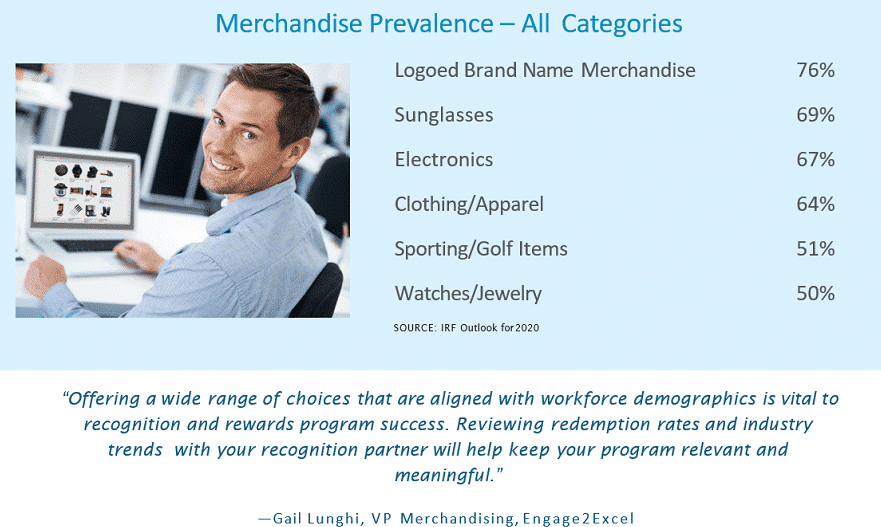
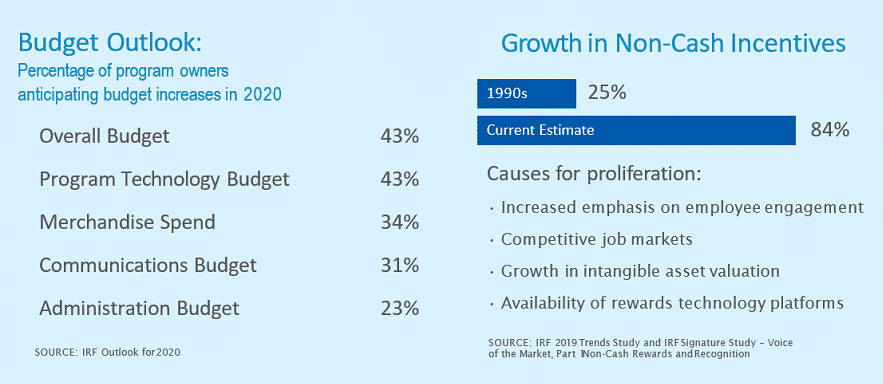
Download
 hbspt.cta.load(123973, '31357b22-23f3-4000-b0e5-4a956fc380f0', {});
hbspt.cta.load(123973, '31357b22-23f3-4000-b0e5-4a956fc380f0', {});
Creating Compelling Recognition Experiences
An exciting trend in employee recognition is the inclusion of experience-based programs. Experiential recognition and rewards are particularly appealing to Millennials and Gen Y employees, who place a high value on group experiences that are memorable, personal and sharable. These programs can take many forms, as shown by the examples below.
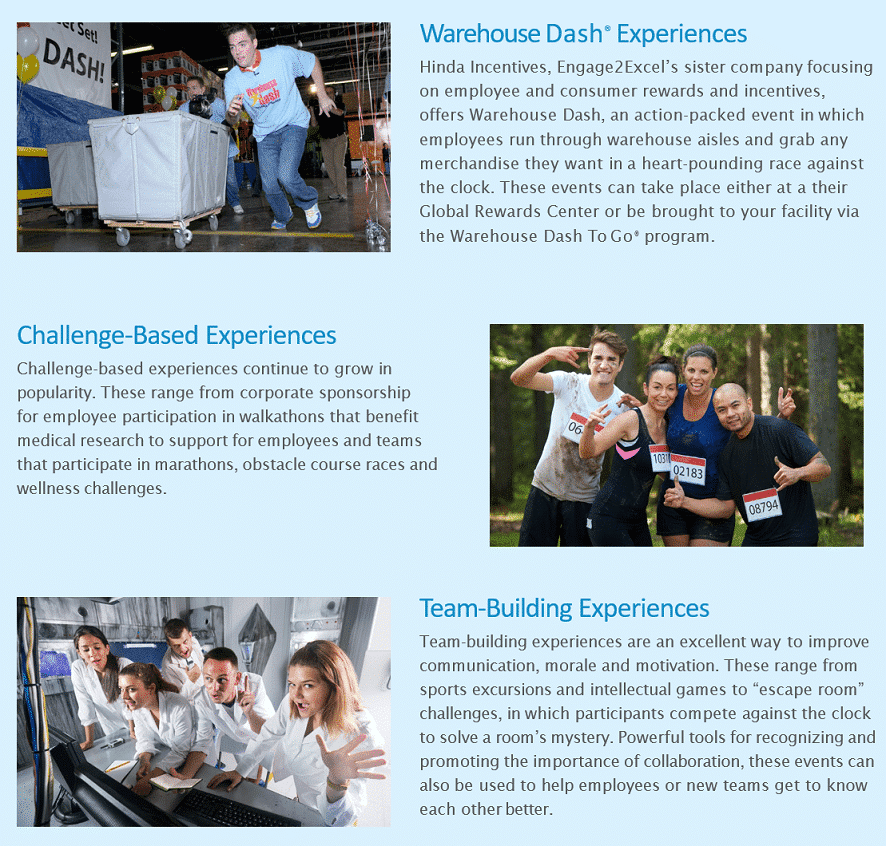
Download
 hbspt.cta.load(123973, '31357b22-23f3-4000-b0e5-4a956fc380f0', {});
hbspt.cta.load(123973, '31357b22-23f3-4000-b0e5-4a956fc380f0', {});